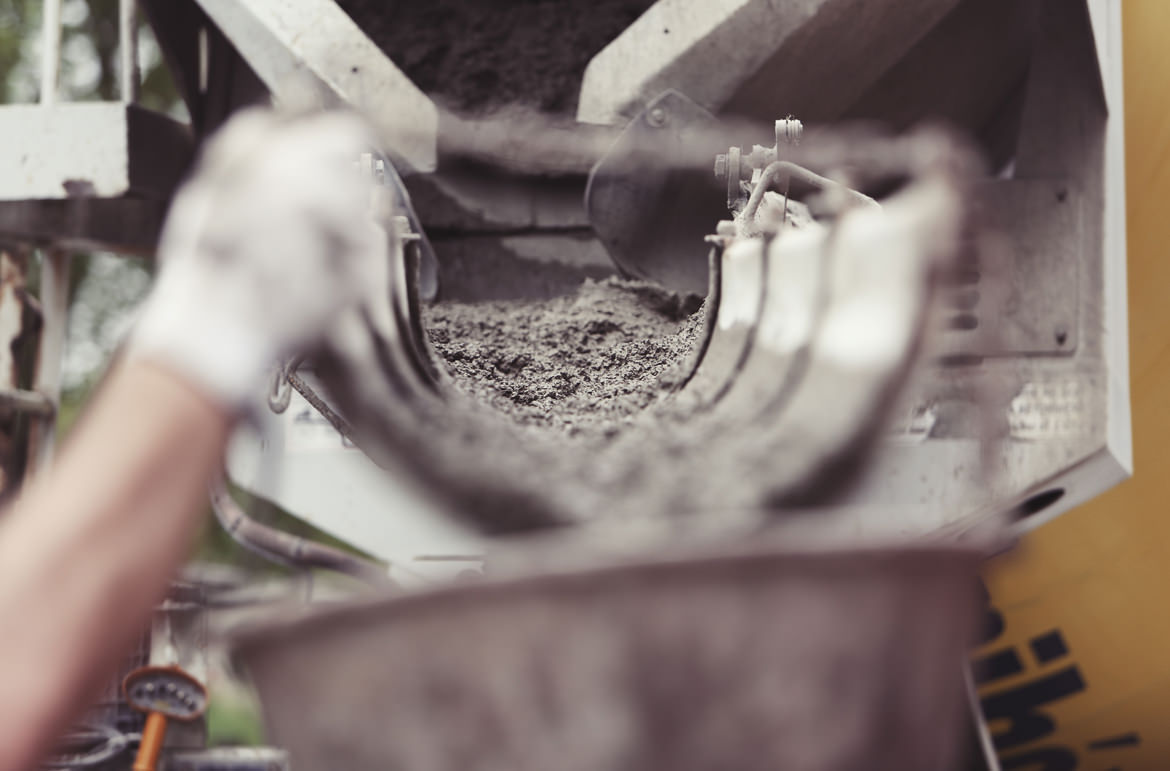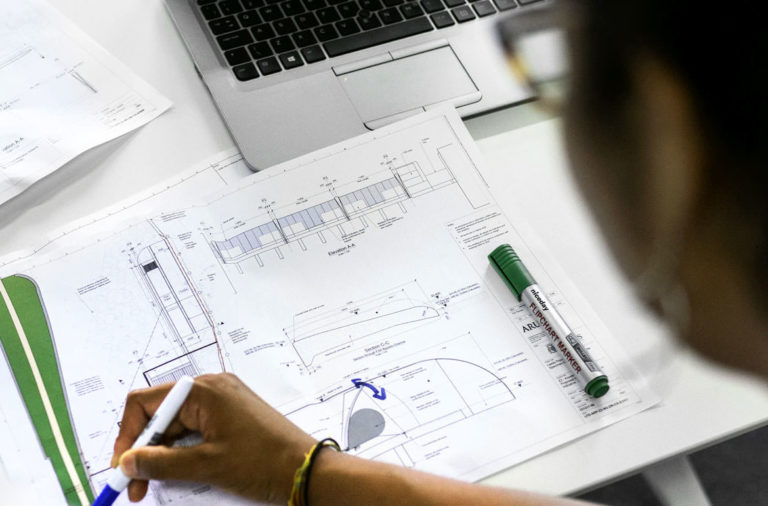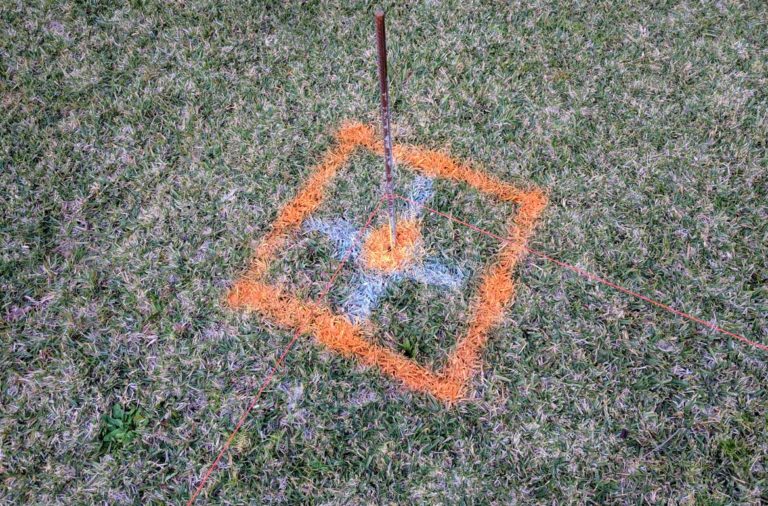
When setting out to plan our granny flat, I was worried about our sloping land. All other designs I had seen were built on concrete slabs and I knew this wasn’t possible for us.
But I managed to do some research.
So, do Granny flats need to be built on concrete slabs? No, they don’t. Concrete slabs are generally used when the land is flat. When there aren’t major issues of flooding or termites. Building a granny flat on piers is perfectly fine. There are however a few restrictions you need to know about.
We decided to build on piers, as the cost to excavate and flatten the land was just too much. (we were quoted over 10K to do so)
Building on piers also meant a few pleasant surprises were in store for us. I will get into these in a moment.
Why Build on Piers Instead of a Concrete Slab?
The foundation of your granny flat needs to meet strict guidelines to be approved.
DON'T PAY A FORTUNE FOR YOUR GRANNY FLAT. Find out how to deal with council and build a granny flat for the lowest cost possible. Learn More.
And there are only two real options allowed: Piers or a slab.
Piers work best when the land isn’t flat. The cost to bring soil from the top half of the land and flatten/compress it can be expensive.

Engineering drawing I received about flattening our land
In fact, I was quoted thousands of dollars just to move some dirt around by a local excavation company.
And the costs would not have stopped there.
It isn’t as simple as just moving dirt from a higher point to a lower point and dumping it there, if you want to a concrete slab to build on.
An engineering report would have to be created to ascertain the ratio of “fill” that would be allowed.
In the report I was given by our engineers, it mentioned the detail below:

More information from the Engineering report we ordered
To level the land enough for a concrete slab, the exact ratio of fill would have to be met above.
This is where even more expense would come into play.
This “fill” then needs to be compacted, which takes more time and can hold up construction.
After dirt, sand or silt is moved around land it takes time to settle. And the act of heavy rain for instance can dramatically change how much the earth compacts or settles over time.
All of this needs to be considered, before just laying a slab on “just moved” soil.
Piers Protect from Flooding
Our land slopes down from the street.
This means that water runs naturally to our back yard when it rains. Building on piers prevents any flooding issues with building directly on the ground.
This secondary reason, helps us sleep at night especially if it continues to pour for days on end.
Piers Protect from Termites and White Ants
Raising any building off the ground helps keep termites and white ants away. With piers you can use “Ant caps” over brick piers.
These prevent the termites or white ants from crawling up to your granny flat through the middle of the brick piers themselves. It also makes seeing a trail they make on the outside of a brick pier easy to spot and stop!
For granny flats built on piers, you generally don’t need anything other than ant-caps, however that is not always the case.
If the piers for your granny flat are too low, (piers under 400mm in height within 2 metres of each other) you may need extra termite protection.
This includes a professional pest inspector to introduce a chemical barrier around the dwelling.
Piers Can Look Better
Sometimes piers look better as you can choose from a huge range of metal piers, brick piers, even wood piers.
Designers like to use the space around piers to dress them up.
This requires some inspiration which might come in the form of plants, paint or cladding for instance.
Concrete Slab vs Pier and Beams
The benefits of using a concrete slab over piers are:
1. Access to the granny flat is easier for elderly people or for wheelchair access
Building on a slab instantly means you can provide a flat path right up to the front door. This should be considered if you are planning your granny flat for elderly occupiers or renters.
Also, providing easy access helps to broaden your range of tenants (if you plan on renting your secondary dwelling).
Even Mum’s with young children are looking for safer places where their children can play.
And high ledges, or what perceive to be dangers for young children can scare potential tenants off.
2. Privacy needs to be increased, as neighbouring fences will not be high enough.
A higher dwelling means less privacy for the people living there. The higher you’re off the ground, the better the view may be, but that works both ways.
If piers are fairly high off the ground, then any fence line will not be high enough to offer enough privacy.
This of course can be combated, with fast growing hedge trees or clumping bamboo.
However, in any case this will take some time.
If you are building on piers like we did, consider planting hedge trees as soon as you can, to give them longer time to grow.
Some people plant their hedging trees even before approval has been given.
3. If land is flat, laying a concrete slab can be cheaper.
If you don’t need to excavate and flatten the land, then poring a simple concrete slab can be cheaper.
Laying concrete is relatively inexpensive compared to other types of trades, as the labour is not that intensive.
You can order concrete with little notice and a concrete pump. Then it only takes an hour or two to have it level.
The rest is up to mother nature to simple dry and harden.
You can even purchase concrete which hardens faster if you don’t want to delay the build.
For example, 25mpa (25 Mega-pascal) is the “standard” concrete builders tend to use for slabs.
However, you can imagine on much larger projects where time is money, they need concrete to cure much faster to continue building.
Say, for a large apartment building for instance.
In that case they opt for 40MPa+ concrete, this cures to a 40MPa compressible strength in 28 days, as opposed to 25MPa in 28 days for the previous example.
The only issue is higher MPa rated concrete, will just cost more.
Best to speak to a concrete company such as Hymix and ask about prices for varying MPa ratings.
4. You won’t have height penalties to worry about (in most cases)
This last point needs a little more explanation.
There is a rule which states that secondary dwelling heights can be no higher than 3.8 metres without any restrictions.
Granny flats can be higher than 3.8 metres, but (for land size under 650sqm) you need to add a rear set back of 3m + three times the distance between the height of your granny flat and 3.8m
For instance, if the piers you build are 1m high and your granny flat itself is 3.5m high from floor level.

The total height of your granny flat (at the highest pier) is 4.5m high
Therefore, you need to be:
4.5m – 3.8m = 0.7m
0.7m x 3 = 2.1m
2.1m + 3m = 5.1m away from the rear boundary of the property.
You can quickly see that as the piers increase in height you will need to be a fair distance away from the neighboring fence line.
And this is a concern, you don’t need to worry about with a cement slab.
Simplicity of Building
There are less steps involved in building a granny flat on a slab.
Once the slab is laid down, the frame can be built straight on top.
With slabs, whether you opt for the most common options, either steel piers or brick piers you need to dig large holes (based on engineering diagrams).
Have these holes filled with concrete.
Then construct each pier to an exact height for the bearers and joists to rest on.
The easiest way is to use adjustable steel piers.
These give you the flexibility to ensure every pier is the right height before laying the floor down.
If you decide to go for brick piers, then when it comes time to lay the bearers and joists, all the piers won’t be the same height.
Gaps are formed from the top of the brick piers to the bearers themselves. This is always the case, but not to fear.
These small gaps can be filled with packers as long as the ‘gap’ isn’t too large.
They are small plastic objects that help support the granny flat on top of the brick piers.
Ensuring everything is level and the floor does not ‘sag’ over time to a lower point.
Conclusion:
You don’t need to build on a concrete slab for your granny flat.
After doing a ton of research I did notice there really are pro’s and con’s for choosing one over the other.
We opted for brick piers as our land was not flat.
And luckily! My uncle is a brick layer, so he helped us out.
I was able to dig the holes myself using rented equipment (a two-man auger) which set me back just over $100 to hire for the day.
And with a friend we were able to dig all the foundation holes in a day.
Then ordering the concrete and the pump was another $1,500 (combined) and was literally done in 30 mins.
The bricks cost me $866, the mortar $80 and rest was up to my awesome uncle!
However, if we did have flat ground to start with, I would have just opted for the concrete slab.
So, I wouldn’t have to worry about height restrictions or having to worry about hitting some pipes when having to dig the holes for the pier foundations.
I hope this helped shed light on piers or concrete slab for your own granny flat.











